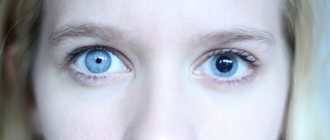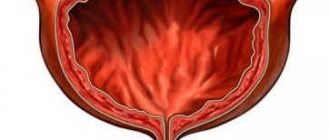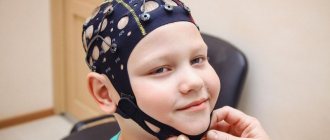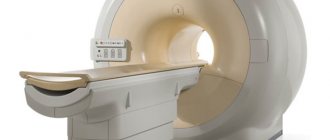Babinski reflex
is one part of the testing that doctors use to check for neurological conditions. Irregular reflex responses may be a sign of an underlying neurological condition that will require further testing to make a diagnosis.
The Babinski reflex, also called the plantar reflex, is an automatic reflex of the foot in response to stimulation. Joseph Babinski, a French neurologist, first documented this reflex in 1896. Testing for the Babinski reflex involves stroking the sole of the foot and assessing the response in the toes. If the Babinski reflex is present, the big toe will rise up and the other toes will fan out to the sides.
Although it took some time for the reflex to gain recognition, it is now one of the important signs in clinical neurology. Doctors still use the Babinski reflex as a standard part of neurological testing.
The Babinski reflex determines the health of the cortical part of the spinal tract, which is the nerve channel that transmits information between the brain, body and limbs. It is primarily responsible for motor control in the body and limbs.
Babinski reflex in children
Study published in the International Journal of Physiology
, showed that the Babinski reflex occurs in approximately 62-75% of newborns. Because newborns usually do not yet have a fully developed nervous system, the reflex is not a sign of neurological disease.
Although the reflex reaction is normal in infants, it should be absent after 24 months of life. In some cases, the reflex reaction disappears earlier - already at the age of 1 year. Doctors believe that Babinski's reflex, which occurs in adults or children over 2 years of age, is an abnormal reflex reaction. This may be a sign of an underlying neurological condition or nervous system disorder.
Cause of pathology
Certain brain cells are responsible for forming and sending impulses. They also control the inhibition of constant motor impulses of neurons in the anterior horns of the spinal cord.
It is thanks to the constant inhibitory impulse that pathological muscle contractions do not occur. Based on the mechanism of occurrence of Babinski’s symptom, it follows that the causes of the pathology can be disturbances in the functioning of the central nervous system of various types:
- injuries;
- infections;
- congenital developmental anomalies;
- inflammatory processes;
- hemorrhages;
- tumors of various types;
- sclerotic changes;
- tissue swelling.
Not only the nature of the lesion is distinguished, but also the place of its occurrence. The source of the disease can be located both in the brain itself and in the fibers of the spinal cord. This pathological reflex can be interpreted ambiguously when the patients are children, especially those under two years of age.
In newborns
Babinski's symptom in newborns and children under 2 years of age is not always a pathology. The positive reflex in this case manifests itself for physiological reasons. Namely, the weak development of the cerebral cortex, its cells responsible for the formation and processing of impulses.
At this time, the central nervous system, including the pyramidal tract, is just beginning to improve the system of transmitting impulses to the brain and back to the source of the stimulus.
In other children
As a child grows up, all systems of his body develop and improve their functioning. In cases where the child is 2 years old or more, the appearance of an extensor reflex may indicate a disorder. For a pediatric neurologist, the presence of this symptom will be the basis for regular examinations and monitoring of the patient over time.
On the one hand, each organism is unique, and the time required to debug all processes in it may vary. On the other hand, the sooner a symptom is identified, the more complete an anamnesis a specialist can make. This means performing additional diagnostics, scheduling consultations with other specialists, taking measures to prevent the progression of the detected disease, and prescribing the correct treatment.
In adults
Unlike children, in adults Babinski's symptom is always a pathology. If it is identified, a further set of measures will be aimed at diagnosing the cause and severity of the disease.
Causes of Babinski's sign in the brain and spinal cord:
| Brain | Spinal cord |
|
|
The pathological conditions listed in the table are not the entire list. There are diseases that can develop in both the brain and spinal cord.
Having a detrimental effect on their structure and functioning, for example:
- multiple sclerosis;
- tumor;
- cyst;
- injuries;
- infections;
- destruction of the membrane of neurons.
The manifestation of Babinski's sign on two feet may indicate a severe degree of the disease or the presence of several foci.
In what diseases is a positive Babinski reflex observed?
In adults and children over 2 years of age, the Babinski reflex may be a sign of an underlying central nervous system disorder or another problem in the cortical spinal tract. Possible associated disorders include:
- spinal cord injury
- spinal cord tumors
- defects of the spinal cord or spine
- brain tumor
- multiple sclerosis (MS)
- Lou Gehrig's disease
- stroke
- meningitis
- cerebral paralysis
Because a reflex response is not a diagnosis in itself, a person who has an abnormal reflex response will still need further testing to determine the underlying cause.
What is Babinski's sign?
A person's involuntary reflexes, controlled by his nervous system, are the brain's response to various stimuli. The value of this kind of data for making a diagnosis is that a person cannot manage it independently. It is not possible to hide such a reaction, whether intentionally or not.
Any qualified neurologist knows what Babinski’s symptom is. For people without medical education, it can be difficult to understand its meaning. It is necessary to have a general understanding of the functioning of the human central nervous system, its perception of external signals, methods of processing and output.
Under the influence of external stimuli, nerve endings form impulses that are transmitted to the brain. Analyzing the information received from them, it issues response impulses. Simply put, commands for skeletal muscles with an algorithm for further actions.
Depending on the situation, this could be:
- jerking;
- redistribution of equilibrium;
- block on muscle activity;
- flexion;
- extension.
Babinski's sign is a reflex, which is a pathological reaction of the toes, accompanied by their extension. The peculiarity is that normally, when a certain area of the foot is impacted, a command should be received to bend its muscles downward. The above symptom has age-related exceptions due to insufficient development of the cerebral cortex.
After carrying out manipulations to test the reflex, the result can be positive or negative. In medical practice, there are cases of false-positive interpretation of the result, which were subsequently not confirmed by additional diagnostic methods.
Testing and results
To test for the Babinski reflex, the doctor uses a blunt object such as a spatula. Before the test, the person must be in a relaxed state. You can warn the person about the sensation of the test, which can range from ticklish to uncomfortable and unpleasant. The therapist will then firmly stroke the bottom of the foot with an object, moving from the heel up to the toes and then to the big toe. The standard response occurs automatically, causing the toes to curl downwards in the direction of the pressure and stimulation. This normal reaction confirms that the Babinski reflex is absent.
The Babinski reflex occurs when the big toe extends upward toward the top of the foot. At the same time, the other toes fan out in different directions. If this happens, it means that the Babinski reflex is positive.
If nothing happens and there is no reaction, then this is a neutral result. The test is therefore of no value and doctors will move on to other testing methods.
The neurologist will perform a test on both legs. A reflex that is present in one leg and absent in the other can indicate which side of the nervous system is affected by the underlying condition.
Manifestations in children
The situation with the Babinski reflex in children is far from ambiguous - the symptom up to a certain age can be attributed to a variant of immaturity of the nervous structures. It will definitely be checked in babies who have just been born. Normally it is positive, on both sides. A negative result from Babinsky's study may indirectly indicate pathologies of the nervous system such as cerebral palsy or a congenital tumor.
As the connections between nerve cells and fibers strengthen, the reflexes in newborns change - some of them weaken, while others strengthen. Up to two to three years, the system is constantly rebuilt and adapts to changes inside and outside the body.
Later manifestations of the Babinski reflex after 3-4 years should cause natural anxiety - by this age the symptom gradually fades away. However, its presence may indicate either underdevelopment of parts of the nervous system, or a hidden pathology. It is often caused by brain injury in children.
The prognosis will depend on the timing of diagnosis - identification of Babinsky's symptom, as well as treatment measures followed by rehabilitation. The child's body is flexible and has great potential for recovery. Therefore, with appropriate therapy, the child will develop according to age.
Babinski reflex
Found (22 posts)
pediatric neurologist September 29, 2009 / Malvina…
During a medical examination of a 7.5-year-old child, the neurologist found
Babinski
reflex questionable and unclear. What could this mean? open
dermatologist November 17, 2008 / Vladimir...
...flexion contractures of the hands and feet. Positive Babinski's
.
Mild stiff neck. Big fontanelle…. The pupils are constricted, there is no photoreaction. The corneal and corneal reflex
is suppressed. Trismus of varying severity. Periodically… open
pediatric neurologist November 17, 2008 / Vladimir...
...flexion contractures of the hands and feet. Positive Babinski's
.
Mild stiff neck. Big fontanelle…. The pupils are constricted, there is no photoreaction. The corneal and corneal reflex
is suppressed.
Trismus of varying severity. Periodically...open (1 more message)Last 5:
neurologist April 2, 2006 / Ruslan
... that if I don’t change my socks for a month, I develop signs of pyramidal insufficiency, in particular, the
Babinski
reflex , in addition, if a month-old sock tears, then on the side ... open
pediatric neurologist March 9, 2006 / Vera
… . Recently a neurologist came to see us. He tapped our legs with a hammer and said that our leg tone was increased, and that the
Babinski
reflex was preserved. We were not prescribed any treatment. But tell me, how dangerous is all this and what should we do? open
pediatric neurologist January 24, 2006 / Nadezhda
..., both of them were diagnosed with PEP 2-sided pyramidal symptoms.
Babinsky
reflex on both feet ) Treatment was prescribed: Cavinton 0.75-2 times a month, B6 0.5 No. 10 IM, Cerebrolysin 1.0 No. 10 IM. Than… open
January 24, 2006 / Nogovitsyn V.Yu.
There is no such diagnosis.
Babinski
reflex is normal at this age. Cavinton and Cerebrolysin cannot cure anything.
pediatric neurologist August 15, 2005 / Elena
... "mows". Muscle tone in the v/ limb. d= s, in n/con. d is greater than s. Foot clonus.
Babinski
reflex (+) on the right. Tendon ref. in/con. d= s, n/ con. d is less than s. Diagnosis: (in the regional regiment) cerebral ischemia stage II. , … open
neurologist November 24, 2004 / Denis (I.B. 588...
... low on the arms, lively on the legs, C more D. Babinsky's
on both sides.
In the Romberg position, he is unstable with closed... 3 General. Urinalysis - no pathology. Otoneurologist: the pharyngeal reflex
is evoked, the soft palate is mobile. Sensitivity on the mucous membrane... open
neurologist July 7, 2003 / Tregubenko Nade...
… . Clonus stop. Pathological foot signs – Babinski
, Rossolimo, Zhukovsky on both sides.
Abdominal reflexes are absent (... the side of the peripheral nervous system has not been identified. There is an H- reflex
of the prismyramidal process. MRI on a series of tomographs... open
Etiology
The structure of the central nervous system in humans involves a complex scheme of subordination of some structures - on the periphery, and others - the cerebral cortex and subcortical centers. To accomplish the task at hand - transmitting an electrical impulse, or command, so-called nerve tracts are provided. One of the most important is the pyramid path. Along it, impulses move from the brain to the muscle groups of the skeleton.
The mechanism of control over human movements involves performing not only voluntary contractions - on command, but also involuntary - unconscious ones, as well as a ban on motor activity. For example, in a situation where a sharp foreign object gets into a shoe, a pain signal is immediately sent to the cerebral cortex - but in order to prevent a person from falling, the leg muscles stop bending after the first involuntary contractions. The balance is not broken.
If damage to the pyramidal tract occurs, Babinski's sign will be positive. This means that the inhibitory function of the motor nerve pathway has been lost. Such disorders are possible both on one side and on both sides at once - bilateral damage.
Main reasons:
- neuroinfections – inflammation of the nerve fiber of a bacterial or viral nature;
- vascular accidents - strokes;
- traumatic brain injuries;
- autoimmune disorders – multiple sclerosis;
- neoplasms – benign/malignant tumors;
- intracranial hypertension.
The significance of the Babinski reflex can only be assessed by a specialized doctor - a neurologist. After all, there are periods in people’s lives when a failure in the pyramidal tract is a sign of a nervous system that has not yet fully matured. In some situations, the symptom accompanies injury to the tendons of the limbs.










